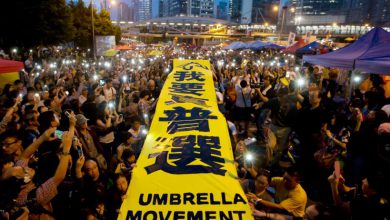AllAsia and OceaniaOngoing
Final and Irreversible? The Living Legacy of Korean Comfort Women
The longstanding legacy of Korean Comfort Women continues to be a sticky diplomatic issue between Japan and South Korea. How have the two countries attempted to reconcile their controversial past?
During the period of Japanese Imperial occupation of South East Asia, the Imperial army created a system of brothels in order to prevent mass wartime rapes by soldiers. Called “comfort stations,” these brothels (run by locals to serve military in the occupied countries) employed local women. Long after the end of the war, the issue of Korean Comfort Women still plays a major role in Japan-South Korea relations. Despite numerous attempts at reconciliation, the two have yet to establish and maintain a lasting solution.
History of Korean Comfort Women
During the height of World War 2, Comfort Women were those who served in military brothels before and during the war. The name “comfort woman” comes from the Japanese euphemism for prostitute. Not restricted to Korea, comfort stations were run in most countries occupied by Imperial Japan including Burma, Thailand, Vietnam, Malaya, Taiwan, the Dutch East Indies, and Timor.
Numerical documentation varies from source to source regarding the number of women made to serve in the comfort stations. The most conservative estimate is 20,000. According to research conducted by the United Nations, there were an estimated 200,000. This number is most likely from an article in the Asahi Shimbun, a Japanese newspaper, which was later corrected to identify 200,000 as the number of women mobilized to work in the civil labor corps during wartime, which needed services such as nurses for injured soldiers on the battlefield.
The 1965 Treaty on Basic Relations
The Treaty on Basic Relations between Japan and the Republic of Korea was signed on June 22nd, 1965. The document established basic diplomatic ties between Japan and South Korea. This collaboration was preceded by talks between 1951 and 1965 which aimed to normalize relations between the two countries.
In 1974, Nobel Peace Prize laureate Eisaku Sato described the treaty as the following:
“[The treaty is] the guiding spirit of equality and mutual advantage and the realistic approach of seeking to establish friendship with close neighbors
Regarding the occupation of Korea from Imperial Japan, the treaty also declared “It is confirmed that all treaties or agreements concluded between the Empire of Japan and the Empire of Korea on or before August 22, 1910 are already null and void.”
In addition, agreements between the two regarding settlements of issues varying from property claims, comfort women and economic cooperation was also agreed upon. Japan provided $300 million grant in aid, $200 million in official government loans, and an additional $300 million in loans from a private trust to be distributed to surviving Korean Comfort Women.
1996 UN Resolution by the Commission on Human Rights
This commission recommended that Japan accept legal responsibility and pay compensation to individuals involved in the Comfort Women issue. The Japanese government denied, arguing that all of the compensation was settled in the 1965 agreement.
The Asian Women’s Fund
The Asian Women’s Fund was a fund established by the Japanese government in 1994, which aimed to distribute financial compensation to surviving comfort women in South Korea, along with the Philippines, Taiwan, the Netherlands, and Indonesia. In private donations, approximately 600 million Yen were donated. The government of Japan provided 4.8 billion Yes. In addition, each survivor received a signed apology by the Prime Minister which stated
As Prime Minister of Japan, I thus extend anew my most sincere apologies and remorse to all the women who underwent immeasurable and painful experiences and suffered incurable physical and psychological wounds as comfort women.
The fund was dissolved on March 31st, 2017.
The 2015 Comfort Women Agreement
On December 28th 2015, a bilateral agreement created between Japan and South Korea was signed. The 2015 Comfort Women Agreement aimed to “finally and irreversibly” bring the longstanding comfort women issue to an end. This agreement was met with acclaim by many nations including United States, the United Kingdom, and Germany.
The argument contained three main pillars. The first included a sincere apology for their wartime conduct in relation to Korean comfort women. Second, Japan agreed to pay 1 billion yen to South Korea to establish a benefit fund for the women. Thirdly, the two agreed to resolve an issue regarding the erection of a comfort women statue in front of the Japanese Embassy in Seoul.
While the first two pillars were met by the Japanese, the South Korean government did not remove the statue. Furthermore, an additional statue was installed in front of the Japanese consulate in Busan. Internationally, these statues are a violation of the 1961 Vienna Convention. An article of the convention obligates a host country to protect foreign diplomatic missions against “disturbance of the peace” or “impairment of its dignity.”
Contemporary Applications
South Korean President Moon Jae-in took office shortly after the deal was signed. He described the agreement as something the people could not “emotionally accept”. On December 27th 2017, Moon criticized the deal as being a “political agreement that excludes victims and the public” that “cannot solve the comfort women issue.”
Furthermore, comfort women statues continue to keep cropping up around the world, with controversies stirring from Manila to San Francisco.
The issue of Korean Comfort Women is far from over. Japan seems to think they have sealed the deal time and time again over the past few decades. South Korea’s ever-changing stance on the finality and irreversibility does not look like it will end any time soon. The surviving women, now very elderly, deserve final peace and closure in the last years of their lives.




